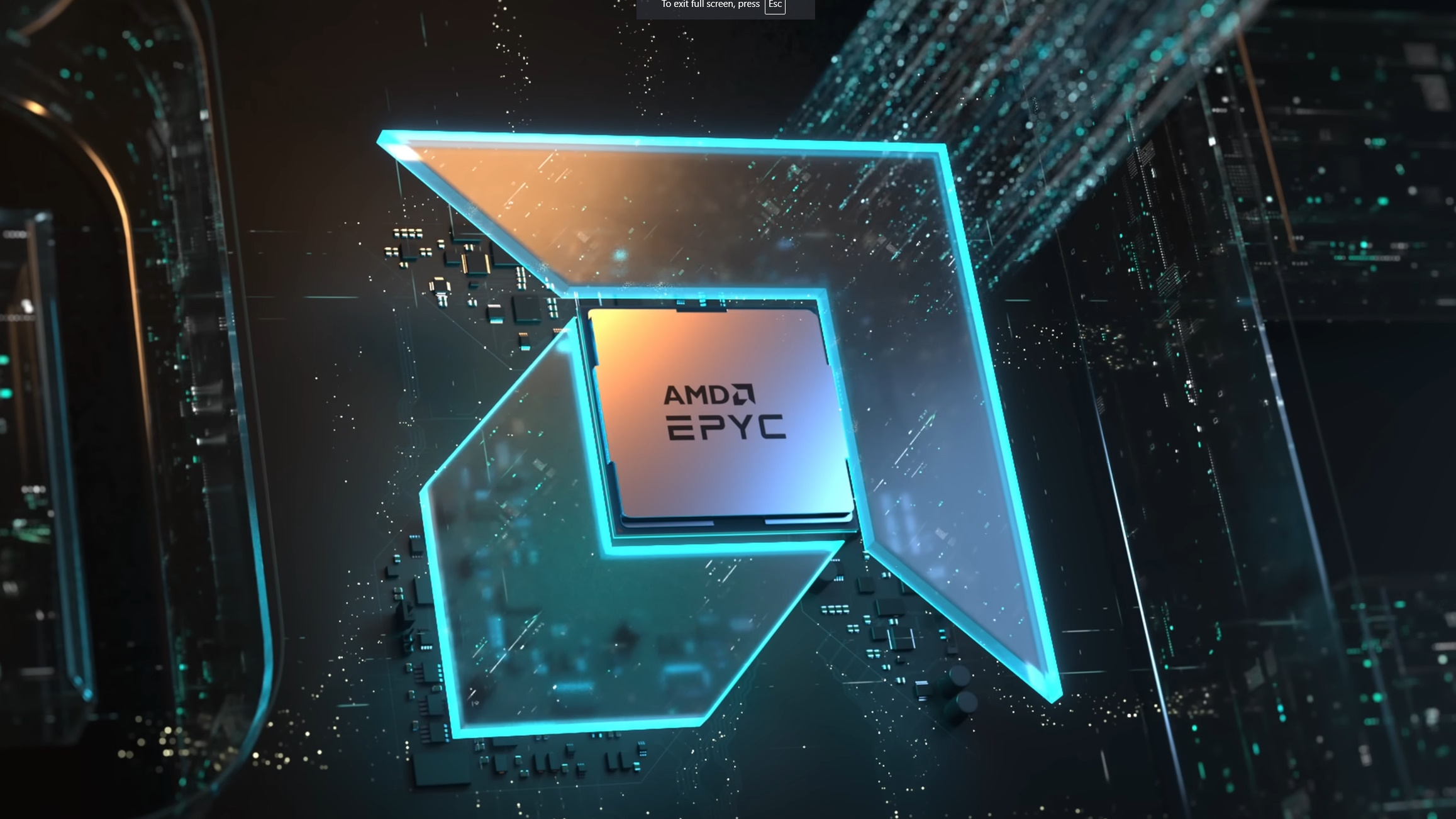
Much as I might instinctually recoil at the suggestion, the server rather than the desktop market is the big growth area right now. I'm told that this is thanks to a newfangled thing called "artificial intelligence", which is why Nvidia, proverbial emperor of the AI crowd, is doing so well and expects to keep doing well with Blackwell. But Nvidia's not the only player in the server market, and there's a change afoot elsewhere, over in the land of datacentre CPUs.
The change in question is that AMD has, for the first time ever, outsold Intel in the datacentre market, bringing home a trend that's been a long time coming. This is coming from X user Sravan Kundojjala of SemiAnalysis (via Tom's Hardware), who charts the datacentre revenue for the two companies against Nvidia's networking revenue.
The reason SemiAnalysis charts it against Nvidia's similar amount of networking revenue is to demonstrate that AMD's and Intel's server revenue is still very far behind Nvidia's overall datacentre revenue—Nvidia's networking division is small beans compared to its compute division, after all.
Talking actual numbers, now, Intel's Q3 AI and datacentre revenue was $3.3 billion while AMD's was $3.5 billion. For reference, Nvidia's Q2 datacentre revenue was $26.3 billion—in other words, over three times AMD's and Intel's Q3 datacentre revenue combined.
That's no surprise, though. GPUs—sorry, "AI accelerators"—are expensive, and AI workloads require a whole load of them to churn through all that data. But CPUs are needed for servers, too, and in this area, AMD's finally caught up with and surpassed Intel.
AMD overtook Intel for the first time in data center revenue in 3Q24. But, their DC revenue scale is small that they are less than NVIDIA's networking (non compute) revenue alone. pic.twitter.com/3LEGTkDF8TNovember 3, 2024
AMD's been taking bites out of Intel's lead for a while, now, but it wasn't always so close. AMD Epyc processor shares used to hold barely a candle to Intel Xeon ones. We can see as much from SemiAnalysis's chart: follow the yellow line back towards 2021 and watch the cavern open up between AMD's and Intel's revenue. It's only really since about mid-2023 that AMD started to make real inroads.
Part of that's down to AMD offering great high-end value for datacentres with its latest Epyc processors, and part of it's down to Intel's general financial struggles—struggles that are present despite the company beating its Q3 financial expectations. AMD's doing better overall, too, having recently posted record Q3 revenues.
It's important not to infer the wrong things from revenues alone, however. Intel still dominates the CPU market in terms of actual shipments—as in, chips actually sitting on server racks. For context, back in Q2, AMD's share of the server market was 23% to Intel's 77%. Intel still commands the lion's share, and this is true in the overall computer CPU market, too, with the Blue Team commanding a roughly 60-40 lead.

Best CPU for gaming: The top chips from Intel and AMD.
Best gaming motherboard: The right boards.
Best graphics card: Your perfect pixel-pusher awaits.
Best SSD for gaming: Get into the game ahead of the rest.
Revenue is good for assessing trends, however, and obviously for assessing a company's financial standing. Under this light, AMD's doing well, and Intel not so well.
For us gamers, the big metaphorical stamp alluding to this is Intel's line-up of Arrow Lake desktop processors, which has had its fate sealed by AMD's 9000-series, especially now the AMD Ryzen 7 9800X3D is out. Intel's Arrow Lake chips are just too expensive for too little performance, even compared to its own previous-gen chips.
And don't think I'm taking much joy in this assessment, either. As fun as it might be to rag on big companies, I can't help but feel pangs of guilt, now, given how Intel seems to receiving blow after proverbial blow. Too much and it's just sad, you know? Plus I'm sure we all want to see some actual competition in the CPU space.
On that front, to get a little more positive, as Wccftech points out, Intel's only just bringing Granite Rapids CPUs into the market, and they're meant to be great performers. So we'll just have to see how that goes, I suppose. Time for a comeback?







